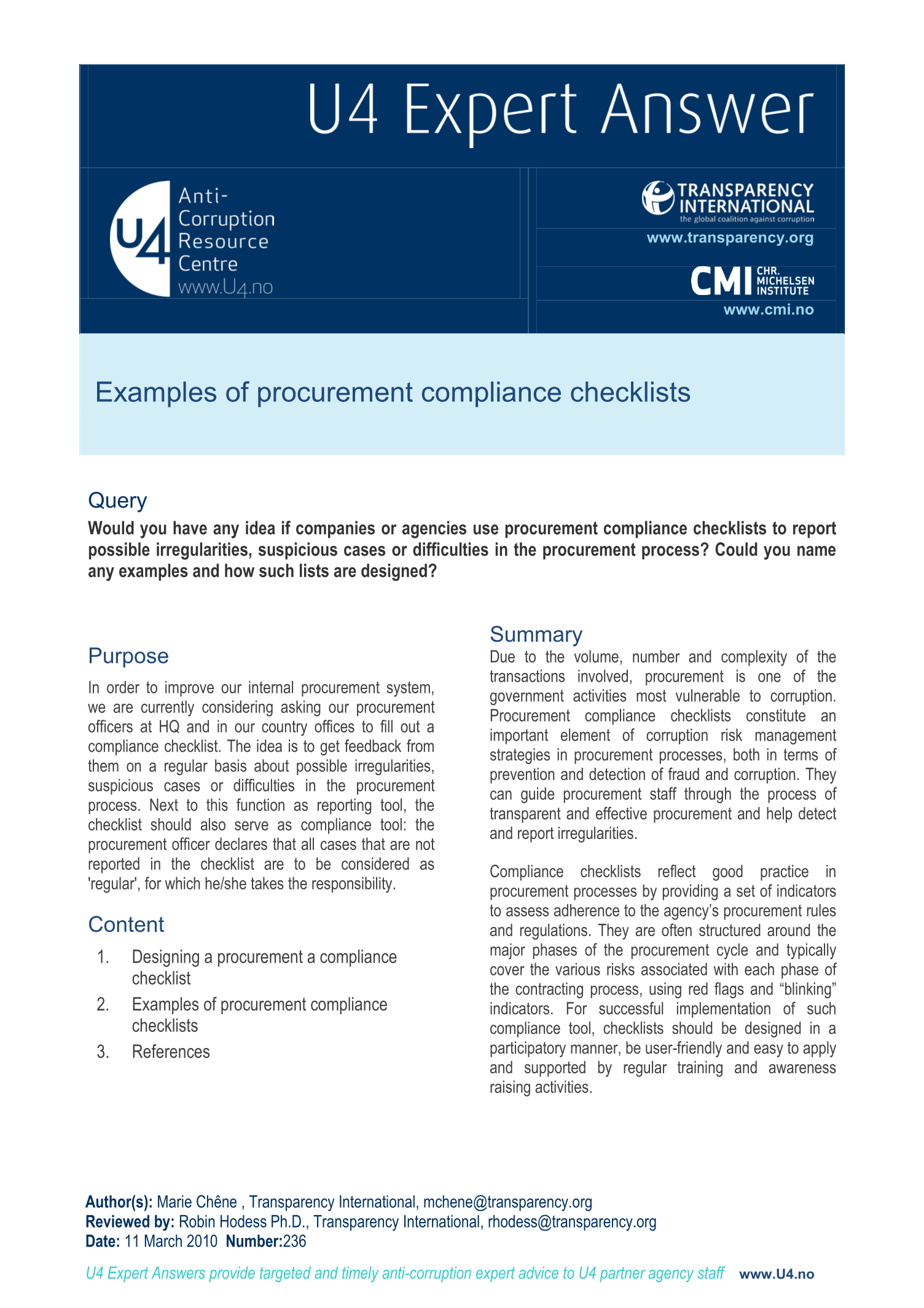U4 Helpdesk Answer
Examples of procurement compliance checklists
Due to the volume, number and complexity of the transactions involved, procurement is one of the government activities most vulnerable to corruption. Procurement compliance checklists constitute an important element of corruption risk management strategies in procurement processes, both in terms of prevention and detection of fraud and corruption. They can guide procurement staff through the process of transparent and effective procurement and help detect and report irregularities.
Compliance checklists reflect good practice in procurement processes by providing a set of indicators to assess adherence to the agency’s procurement rules and regulations. They are often structured around the major phases of the procurement cycle and typically cover the various risks associated with each phase of the contracting process, using red flags and “blinking” indicators. For successful implementation of such compliance tool, checklists should be designed in a participatory manner, be user-friendly and easy to apply and supported by regular training and awareness raising activities.

Cite this publication
Chêne, M. (2010) Examples of procurement compliance checklists. Bergen: U4 Anti-Corruption Resource Centre, Chr. Michelsen Institute (U4 Helpdesk Answer null)
Disclaimer
All views in this text are the author(s)’, and may differ from the U4 partner agencies’ policies.
This work is licenced under a Creative Commons Attribution-NonCommercial-NoDerivatives 4.0 International licence (CC BY-NC-ND 4.0)


